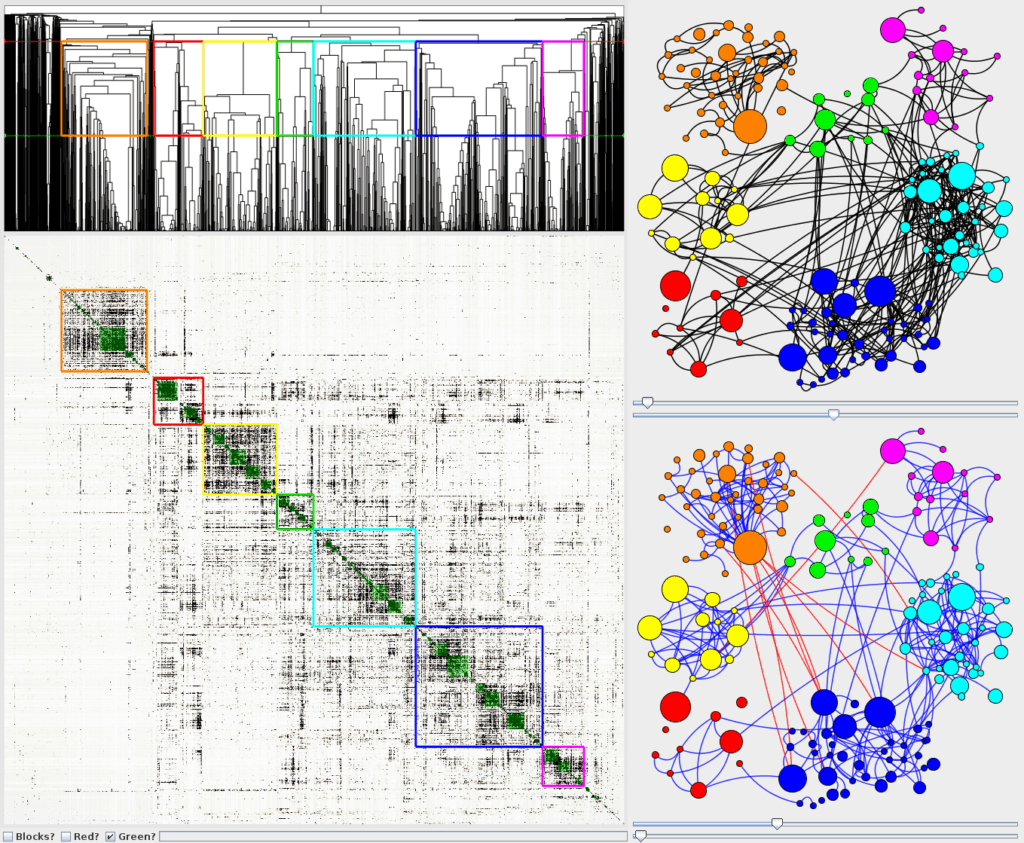Network and Graph Analytics
Network science explores the results of connection. Whether it’s people, objects, or even ideas – network science untangles the complexities of large systems of any kind of connectable thing.
Join Our Team
Network science studies complex systems by representing their component parts as connected nodes. This allows scientists to apply mathematical theories to describe the system’s properties and to create predictive models of the system’s behavior.
Statistical Analysis of Networks
Traditional statistical analysis can be combined with network science to produce analysis methods for networks with complex attributes on nodes and links. These attributes can be as generic as “colors” or as complicated as required for application to a given domain.

Network Detection Theory
Network detection theory is a framework Metron developed to distinguish patterns of suspicious activity in a network from patterns arising by chance. Classical signal detection theory was developed by the radar community in the 1940s to distinguish a weak target signal on a radar return from a random noise fluctuation. Network detection theory applies rigorous detection principles to “network noise” models based on the classic random graph models of Erdős and on more recent models that better represent properties of real-world networks. This theory can be used to identify general anomalies or specific threats depending on the network signal model one uses.
Network Tracking Theory
The structure of a network is often governed by some property of its individual nodes: e.g., a node’s location or its affiliation to a certain community. When a node changes location or affiliation, it tends to break old links and establish new ones. Metron has developed a method to track the evolution of the hidden properties of a network’s nodes solely from observations of its links changing over time. This method approximates a Bayes filter over all community structures in a Markovian network evolution model.


Metron Careers
Data Science Career Opportunities
Metron hires data scientists with experience researching novel approaches that advance the state of the art. Our data scientists apply these innovations to new problem domains working alongside subject matter experts. They are familiar with machine learning tools and pipelines and work with software engineers to integrate solutions into client systems.




